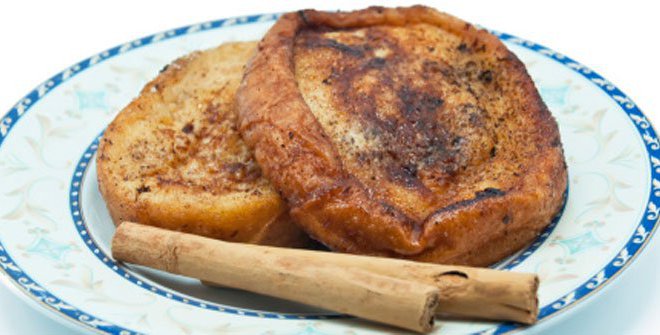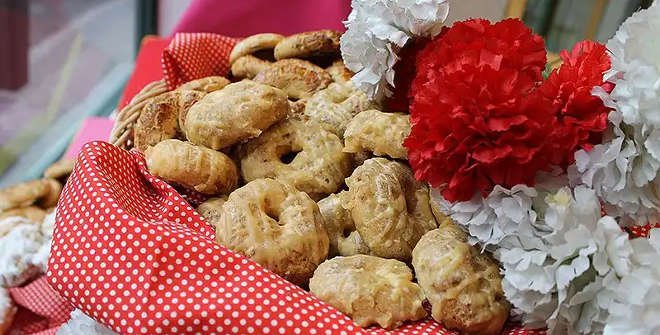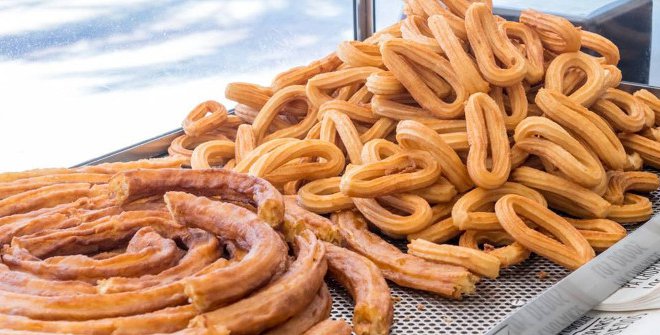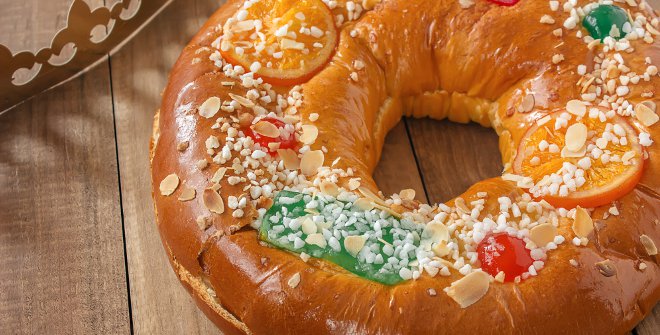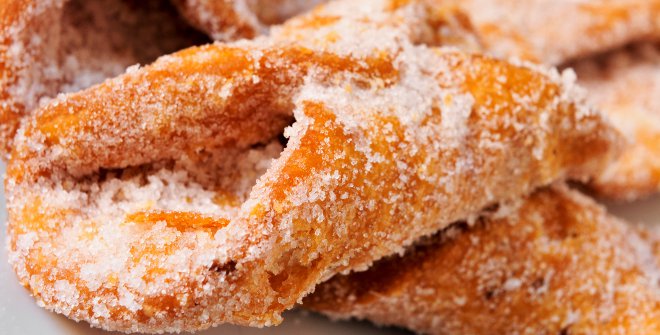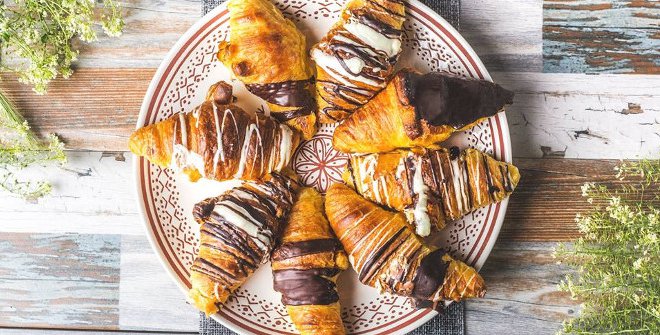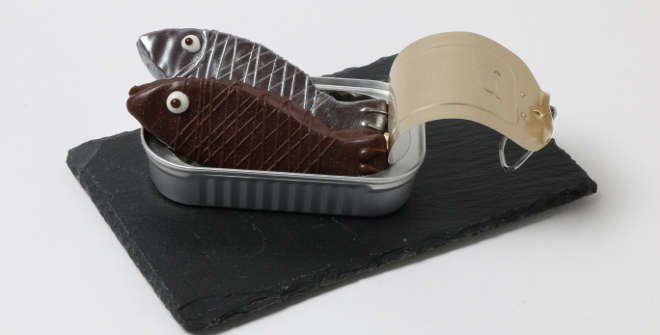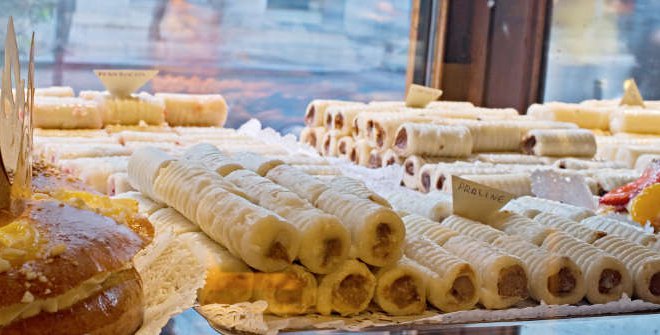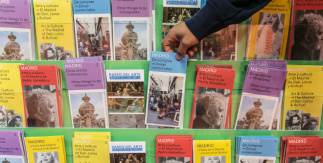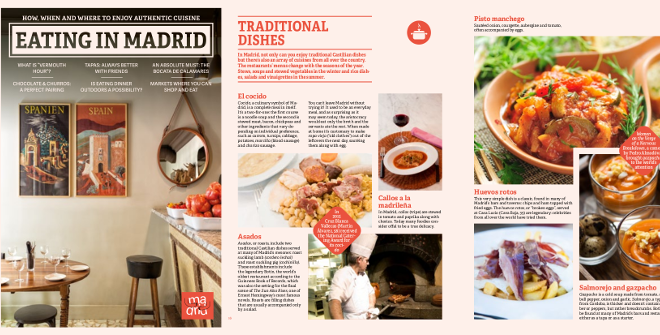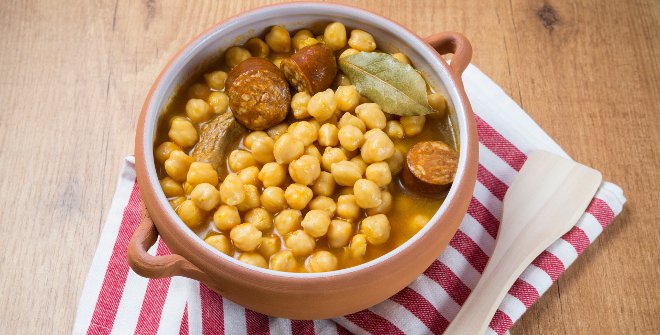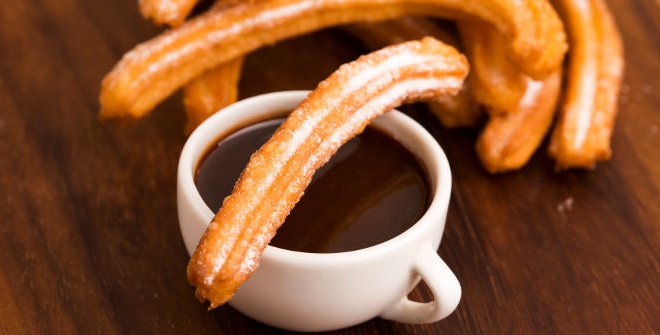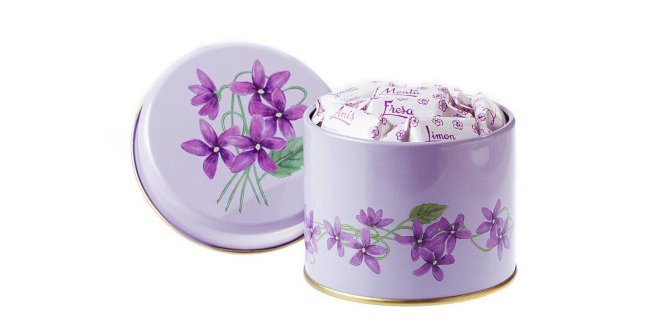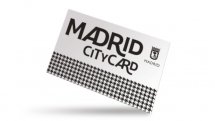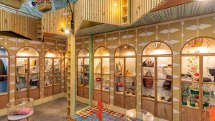Traditional Sweets
Our city's culinary culture includes a huge variety of cakes and pastries, some linked to special dates and celebrations and others available all year round. Using local recipes, often with an Arab influence, the sweets and pastries of Madrid also include specialties from other Spanish regions, highlighting the city's role as a traditional haven for people from across the country.
You can find dozens of cake and pastry shops in the city, some of which have been in business for over a hundred years, like La Antigua Pastelería del Pozo, El Riojano, La Mallorquina and Viena Capellanes. Others opened their doors recently: La Duquesita, Nunos, Vait, Pastelería Artesanal Manolo and El Horno de San Onofre and Rosconería Bargueño.
As many of their products are linked to particular dates and religious festivals, it is hardly surprising that on these days, Madrid's cake and pastry establishments are packed with customers. Here are some of the most traditional sweet treats:
- Roscón de reyes: Every Christmas this delicious round cake, made with orange blossom water and decorated with candied fruit, makes an appearance in our city to celebrate Epiphany, the arrival of the Three Kings. You can buy it plain or filled with fresh cream, chocolate truffle cream, confectioner's cream or chocolate and there is usually a small gift and a broad bean hidden inside, which, according to tradition, brings good or bad luck to whoever finds it.

- Turrón: Spain’s most popular Christmas treats are the different varieties of turrón (nougat candy). Made with caramelised egg yolk or fruit, they can be soft or hard. There’s chocolate turrón too! In the Christmas season, you’ll see lots of people queuing outside Casa Mira, the best turrón shop in Madrid, open since 1942. At 18, Calle Arenal, you can visit the first Turrón Museum where visitors can discover the history of this delicious sweet over more than 500 years.
- Panecillos de San Antón: Around January 17, many of the city's residents go to the church in Calle Hortaleza to have their pets blessed and celebrate the day of San Antón Abad, protector of animals. These little bread rolls, based on a simple recipe, are also blessed and are a traditional part of the ceremony and the day's events.
- Chocolate sardine: This piece of chocolate in the shape of a sardine was recently introduced as a Carnival treat.
- Torrijas: This is the quintessential Easter Week sweet and is enjoyed up and down the country, although these bread slices soaked in egg, milk or wine and then fried get special treatment in our region, with a generous helping of honey poured over them.
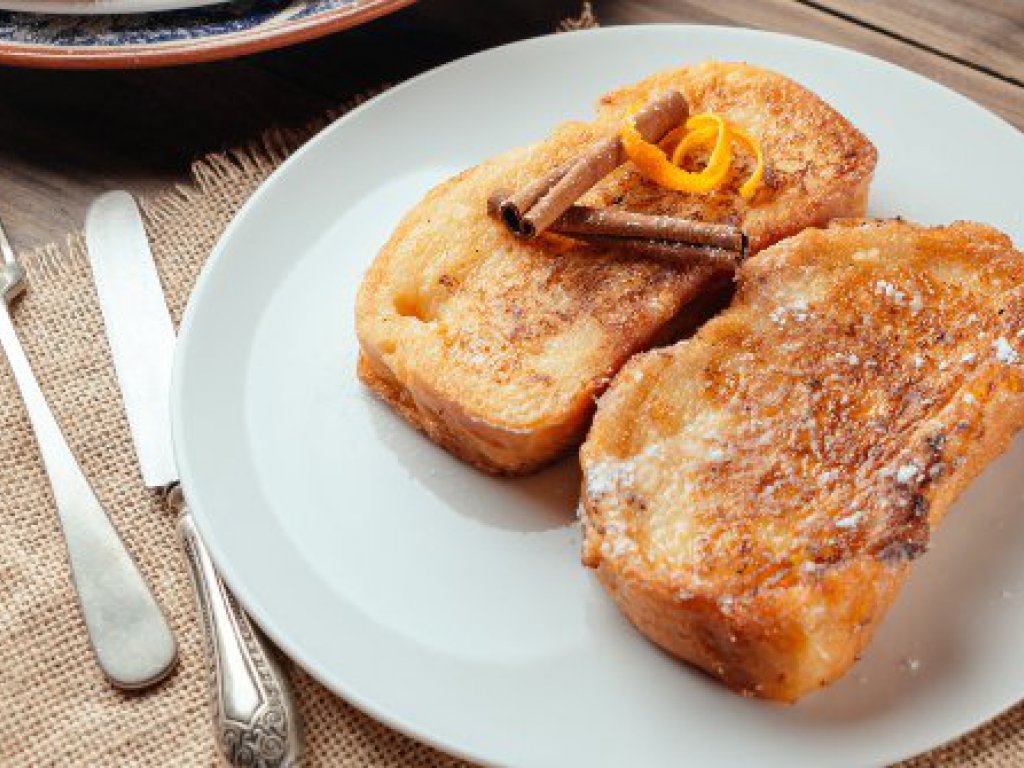
- Rosquillas de San Isidro: Around 15 May, the Feast Day of St. Isidore, Madrid celebrates its patron saint's festival in the saint's own chapel, where everyone eats this authentic local product, a kind of oven baked doughnut ring, washed down with spring water. There are two kinds: listas (smart ones), coated in sugar, and tontas (stupid ones), the plain version.
- Huesos de santo: Literally translated as saints' bones, these sweet almond marzipan rolls are made for All Saints' Day on November 1. They were originally filled with sweet egg yolk cream, but nowadays there is a wide variety of flavours and fillings, including chocolate, coconut and yogurt. The huesos de santo (Saint's bones: filled marzipan rolls) and stuffed fritters are also transformed into an endless number of flavors and colors for all tastes to celebrate Halloween night.
- Buñuelos de viento: These little sweet fritters are normally filled with fresh cream or confectioner's cream and are also typically eaten on 1 November, All Saints' Day.
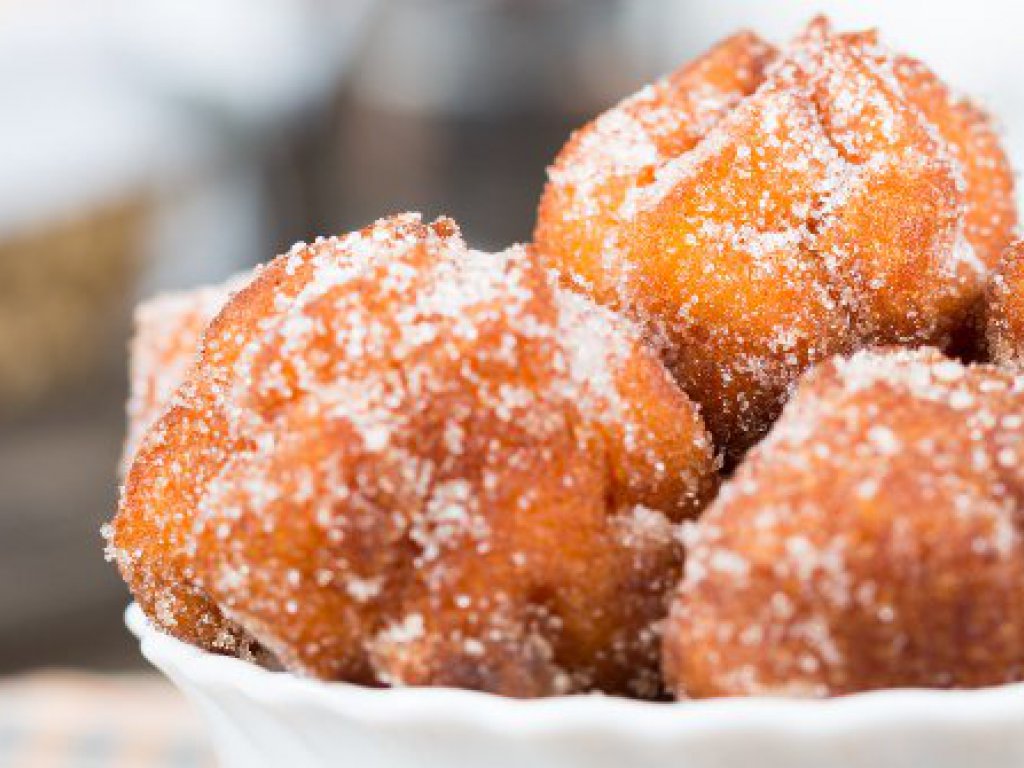
-
Coronas de la Almudena: These crowns were created by Madrid pastry makers in the 1980s to honour their guild patroness and patroness of Madrid, the Virgin of La Almudena. You can see them in cake and pastry shop window displays every year around November 9, the Virgin's festive day. Based on a simple recipe, these cakes are similar to the Roscón de Reyes both in shape and ingredients, although they are smaller; they do not include orange blossom water and instead of candied fruit they are decorated with cherries and designs piped in cream, almonds, etc. They can also be filled with confectioner's cream, fresh cream or chocolate truffle cream.
Madrid is also a great place to try all kinds of sweet treats that are not linked to special festivals and can be enjoyed at almost any time of year:
- Churros: In Madrid, these ridged strips of fried dough are usually given a ribbon shape before being fried in hot oil and sprinkled with sugar. They are ideal for breakfast and tea time and are the breakfast of choice for many partygoers returning home on New Year's Day, accompanied by a cup of thick hot chocolate. An excellent way to round off the New Year celebrations.
- Barquillos: The trade of wafer seller has almost died out, but at one time it was common to see them in Madrid standing next to a barrel. Using a simple game of roulette, people would place bets to get one of their popular cylindrical or flattened wafers. Very popular in the area of El Rastro and Calle Preciados.
- Chocolate a la taza: With the arrival of the cold weather, this hot thick drink becomes the perfect accompaniment for churros at breakfast or tea time in the city's bars and cafés. Chocolatería de San Ginés is the right place when you have a craving for thick hot chocolate and churros (long and slender deep-fried pastry).
- Bartolillos: Similar to churros and pestiños, these large sweet fritters, which are almost triangular in shape, are filled with confectioner's cream and fried very carefully in hot oil.
- Pestiños: Their method of preparation has earned them the name of frying pan fruit. These sweet fritters date back to Moorish times and are typically given a generous coating of sugar or honey after frying.
- Las Chatitas: this typical sweet was introduced in the 1990s by Pedro Martínez López, owner of the Animari cake shop, located in the Salamanca district. It is made of a light sponge cake that can be filled with raspberry, strawberry or caramel and covered in dark, milk or white chocolate.
- Palmeritas (Small palm-trees) and Manolitos: another common sweet in Madrid's pastry shops are puff-pastry small palm-trees. They can be dipped in chocolate, coconut and all types of creations. The most famous palmeritas are in Morata de Tajuña, but they can also be found in Madrid at La palmerita de Morata. It is also worth mentioning Manolitos, undoubtedly the most famous croissants in Madrid.
Handmade sweets in convents and monasteries
Traditional cakes and sweets are still being made in the convents and monasteries on the streets of Madrid, such as the Jerónimo del Corpus Christi Monastery (Carboneras Convent)where Christmas sweets from Jerez, candied oranges in chocolate, rusks, coco puffs, tea biscuits, almond biscuits or home-made biscuits can be purchased, among others. As an interesting fact, when calling the convent to buy sweets, one of the nuns gives instructions on how to get them, all of which is done anonymously.
The Contemplare Foundation holds an annual Monastic Products Fair which offers an exhibition, sale and tasting of artisan gastronomic products made by monks and nuns.
DON'T MISS
Download free maps and guides to the city to help you plan your trip.
Discover the city's most popular sights and attractions, from one of Europe's largest royal palaces to the magnificent Prado Museum and the Real Madrid football stadium.
